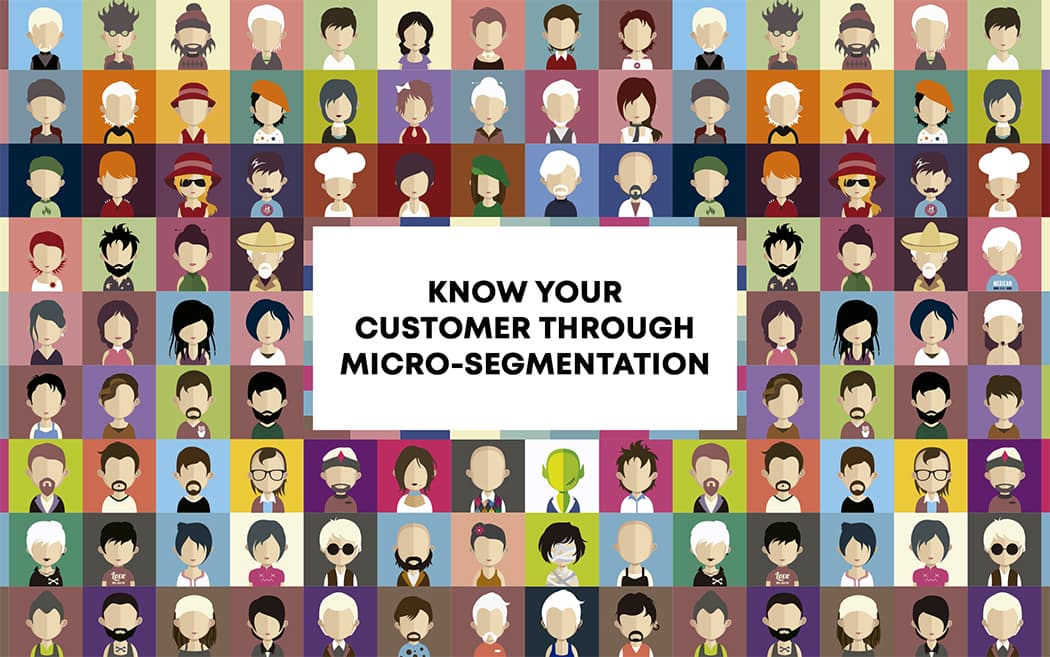Getting traffic to your website, blog, web application or mobile product is likely the first step you will take in your marketing efforts. However, a common mistake a lot of people make is taking this step while not being prepared to build a profile of the different potential customers who are visiting your product, and providing them with a blind one-size-fits-all solution. While this may have been the only option available to us in the past, this is no longer the case. With all the technology afforded to us, it would be considered a waste of advertising dollars to spend on marketing campaigns that bring traffic to your relevant pages, and not maximize your potential for goal conversion. One of the growing trends in this space is micro-segmentation.
What is micro-segmentation?
Micro-segmentation is the act of understanding and identifying a customer’s needs and wants, and providing them a tailored experience that can result in a much higher likelihood of purchase. As you monitor different metrics and user behavior of your audience, you will notice different patterns appear which will provide valuable insight in to why certain types of people (personas) are drawn towards specific parts of your product. The reasoning behind these motivations can vary from cultural to gender or age (to name just a few). Our goal is to be able to identify as many of these metrics as possible and build the user’s profile so that we may serve them the best content possible.
How does it work?
You need to start out by creating deep customer segments by utilizing the available datasets you may have. This could be data gathered via Google Analytics or any other touchpoint your product may have. Users can also be asked a short series of questions to request information from them that may be beneficial in helping you serve them relevant content.
Once you have built several micro-segments which take into account common behaviors, trends, demographic information, browsing pattern history, etc. you can then leverage this information through machine learning models to predict the messaging or product offerings that work best for each micro-segment in order to have the highest potential for conversion. This can be done through many available tools such as Firebase Predictions (or any other similar offering from AWS or Azure).
Lastly, you have to constantly monitor and optimize your micro-segments by looking at the conversion rates to determine which segments are working and which are not. As you collect more data, you should feed it back to the machine learning model to improve it’s accuracy, and also eliminate any incorrect assumptions you may have made to get the model off the ground. As you collect more and more data, you should improve in your prediction accuracy.
Choosing the right micro-segments to target
You may not always have the luxury to go after all the segments available to you. In the age of big data, we are gathering an overwhelming amount of data and perhaps it may not be feasible to tackle all of it at once. In this case, it is important to prioritize and pick the ones you should approach first. This can be done by looking at the identifying factors of the different micro-segments and determining which ones align best with your product’s and company’s mission statement in order to add the most value to it. If the product’s goals are to generate as much revenue as possible in the short-term, it would be important to tackle the micro-segment that has the most likelihood to make a purchase. However, if the goal is more long-term focused and would like to build loyal customers who interact with the brand frequently via different channels and keep coming back over an extended period of time, then perhaps you may consider approaching a micro-segment that spends more time on the product’s different apps or social media profiles, and is more engaged in those areas, regardless of their purchasing habits. As you can see there are an incredible number of possibilities and permutations to take into account. The beauty of this approach is that it is entirely data-driven and takes a lot of guess work out of the equation. You simply need to have a clear vision and roadmap in mind and execute for it.
Need to craft a memorable user experience?
We’ll collaborate with you to build a user experience that addresses the specific needs of your product and its end-user.
Conclusion
In the age of big data and artificial intelligence, we have all the tools available to us to create the most opportunities to win, not only for our product and company, but for our customers, by delivering the best and most relevant information to them, allowing them quick and easy access to what they are looking for in the first place. The companies who are adopting this methodology are forging ahead of their competition at lightning speed, while the rest play catch-up.
 Web Applications
Build web apps using cutting-edge technology
Web Applications
Build web apps using cutting-edge technology
 Business Intelligence Apps
Empower your business with fast & actionable BI Apps
Business Intelligence Apps
Empower your business with fast & actionable BI Apps
 Mobile Applications
Build cross-platform apps for iOS and Android devices
Mobile Applications
Build cross-platform apps for iOS and Android devices
 Internet of Things Apps
Streamline your operations with cloud-based IoT apps
Internet of Things Apps
Streamline your operations with cloud-based IoT apps
 AI Products
Unlock the power of AI & ML with our expertise
AI Products
Unlock the power of AI & ML with our expertise
 Minimum Viable Product (MVP)
Mitigate risks & accelerate your project development
Minimum Viable Product (MVP)
Mitigate risks & accelerate your project development
 Enterprise Software
Build custom enterprise solutions for your business
Enterprise Software
Build custom enterprise solutions for your business
 Software as a Service (SaaS)
Scale your business with ease and cost-efficiency
Software as a Service (SaaS)
Scale your business with ease and cost-efficiency




